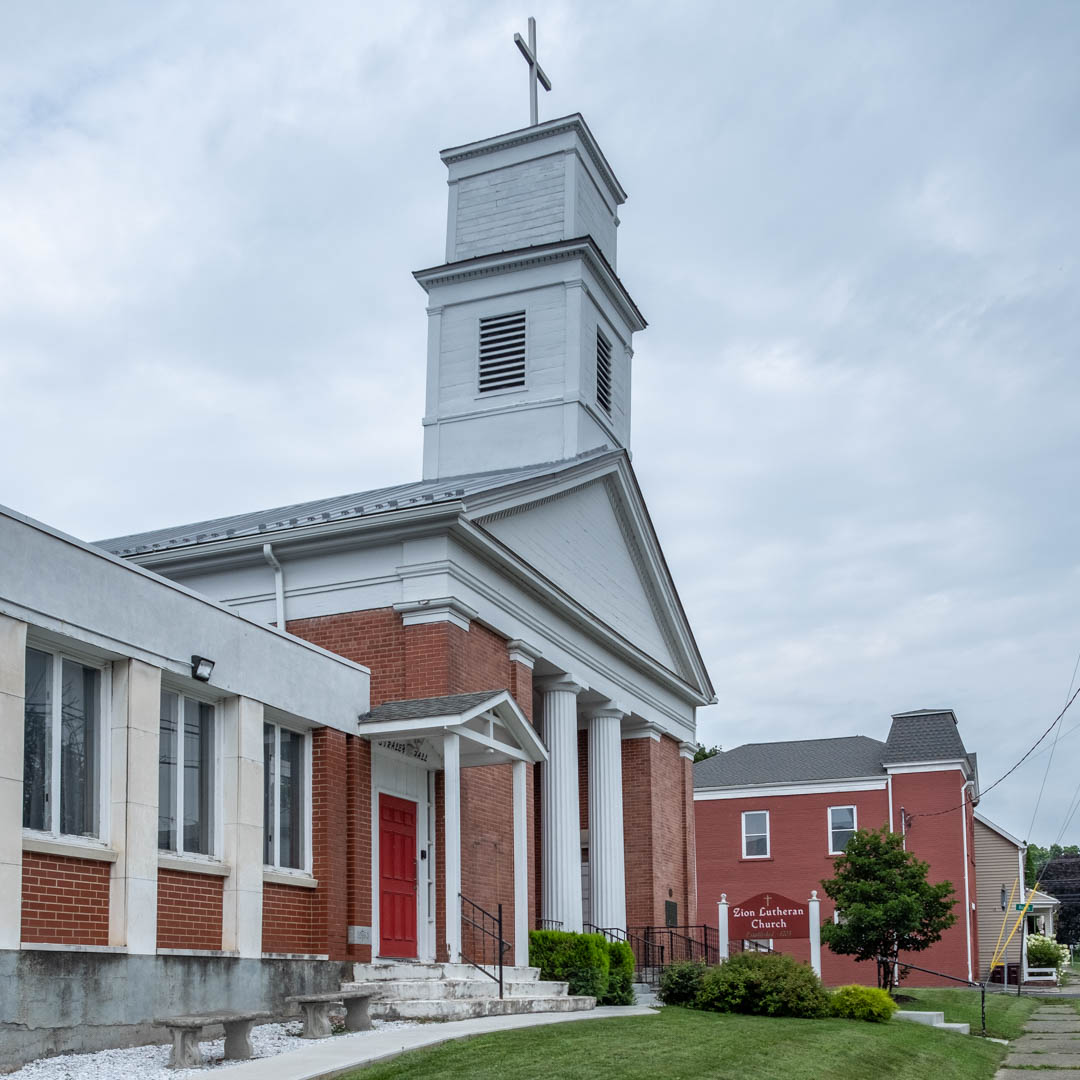Zion Evangelical Lutheran Church (1853)
The Zion Evangelical Lutheran Church is the oldest continuously active congregation of the Lutheran Church in America! The current red church building of classic design was erected in 1853. It was to cost “no more than $7,000.” The building was enlarged and remodeled first in 1897 and then again in 1924, 1953, and most recently in 1996. Straley Hall was built in 1963, named out of respect for Reverend Luther Straley who served as pastor for 44 years.
Being much larger than the original church, the new building was erected farther back from Washington Street. The 1924 renovation included creation of a partial basement and the installation of electricity and central heating. Also, the arch behind the altar was created and the current altar, pulpit, and lectern installed.
The Hook and Hastings tracker organ, donated to the church in 1913 under the terms of the will of Nicholas Van Hoesen, was replaced in 1971. The new organ was built by the L. A. Carlson Company of East Greenbush, at a cost of approximately $12,000.
The actual date of the founding of the congregation is lost in obscurity. However, the fact that records begin in 1704 appears to indicate that there was an organization before that time. The Reverend Justice Falckner, whose 1703 ordination in Philadelphia is believed to be the first in America, was to be the minister of a congregation in Albany. However, when he reached Albany during June 1704, he found the congregation practically disbanded.
Most of the members had moved south along the Hudson River to Loonenburgh [Athens]. While Pastor Falckner held services in both Albany and Loonenburgh, the new Loonenburgh congregation overshadowed the one in Albany. He made this his upstate headquarters and was still pastor at the time of his death in 1723.
It is not known where the congregation first met, but it is generally agreed that the first building was constructed in 1724. That first building was known in the community as the “beehive” due to its unique shape: four roofs forming a peak topped by a small steeple. It served the congregation until the current one was erected. Reverend Wilhelm Chistoph Berkenmeyer was probably the first to preside over services in the beehive, since he was the second established minister of Albany and Loonenburgh.
Reverend Berkenmeyer died in 1751 at age 69. At his request his remains were buried in the beehive. A sandstone tablet was placed over his crypt, situated either in front or beneath the altar. The tablet is now located on the outside east wall between the entrance doors of the present church. It is possible that it still identifies the location of Reverend Berkenmeyer’s tomb.
Apparently the beehive was erected on Van Loan family land holdings, since in 1727 a farm of undetermined acreage, which came to be known as the “glebe farm,” was deeded by Jacob Van Loan, Albertus Van Loan, and Mathyes Van Loan for use by and on the behalf of the Lutheran minister and the Lutheran congregation. While a lot of approximately 150 feet by 100 feet on Washington Street was reserved as the church ground, the remaining land was to be the glebe, land used for the benefit of the church. The land was divided into lots, which yielded revenue to the church. Even today, while the present owners can own the buildings on this glebe land, the land itself is still subject to the glebe rent. This is the oldest and longest continuous glebe in New York state.
If you are walking through Athens today, the Gabriele / Mahar house is a few hundred feet north at 114 North Washington St. Two blocks south is the Albertus Van Loon House – built in 1724 by the son of the original patent-holder of this region.
